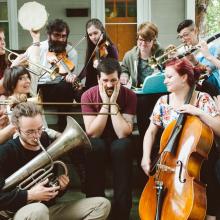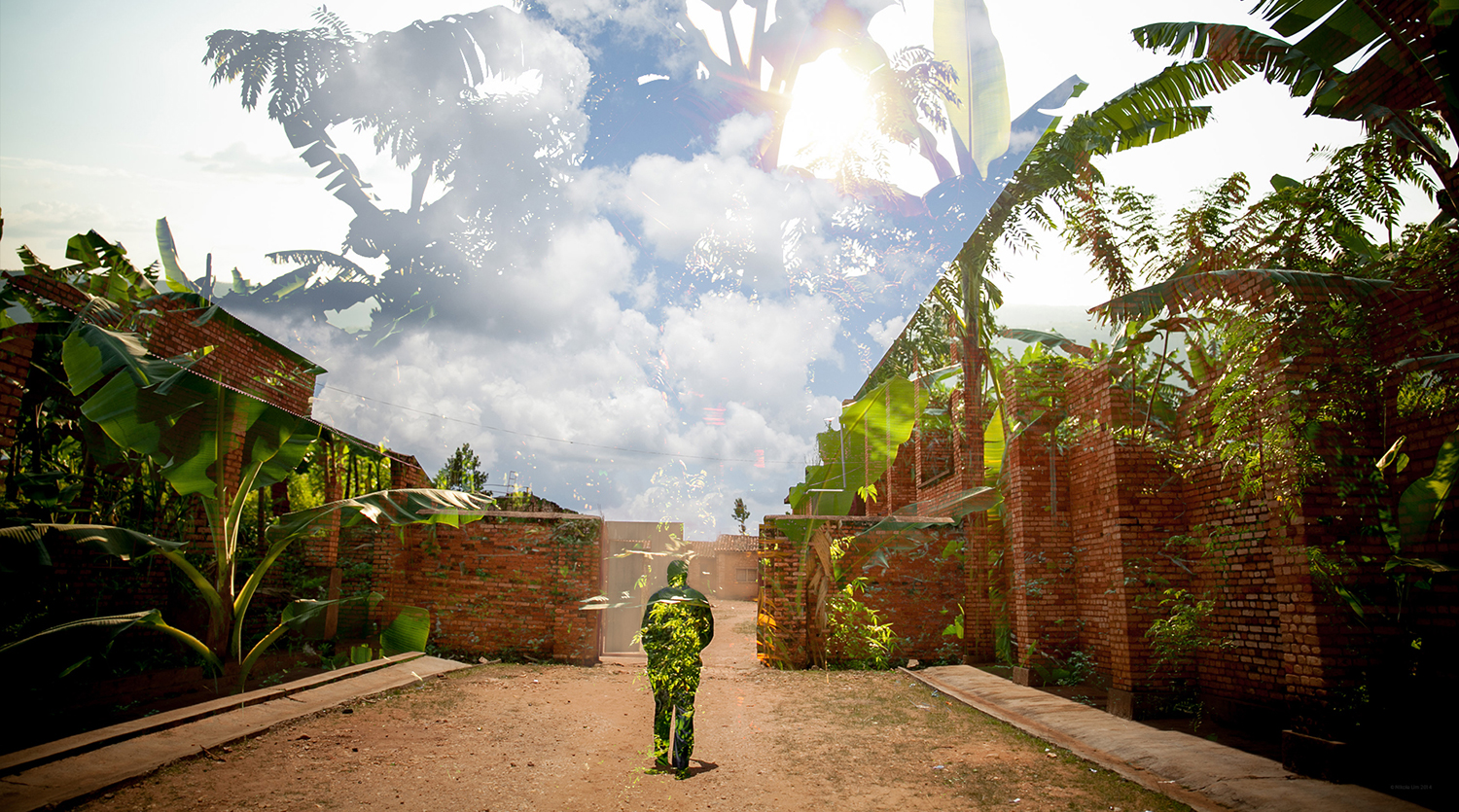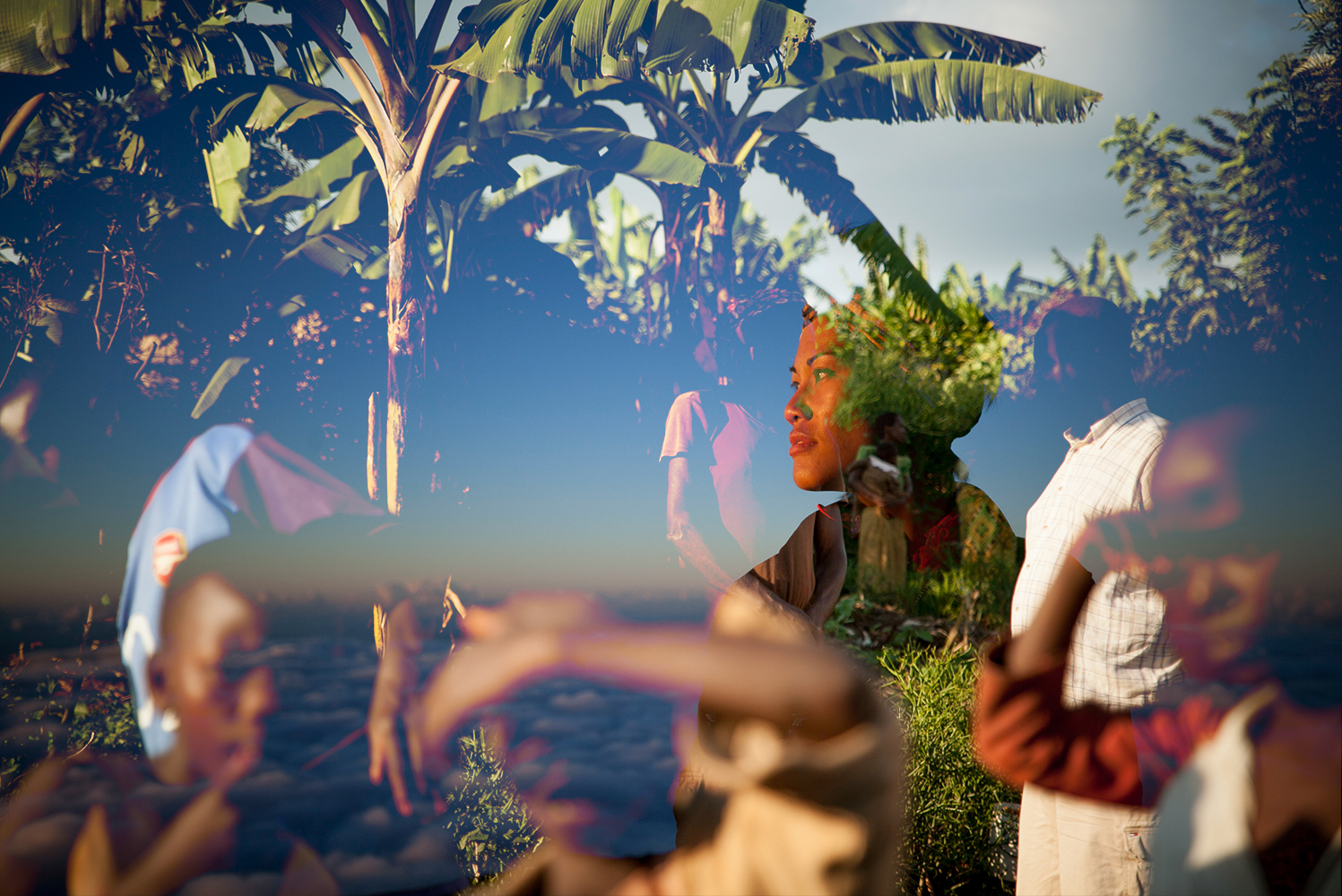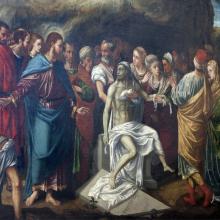death
Lost in the extensive media coverage of Mario Cuomo’s recent death was mention of one of the former governor’s most enduring achievements: the New York state biomedical Task Force on Life and the Law.
During his first term as governor, Cuomo established the 25-member task force because he was concerned that as developments in medical technology and science accelerated, neither society nor state government was prepared for the critical decisions required in the face of such rapid change.
Cuomo’s instruction to the task force was to study the new frontier of bioethics and make specific public policy recommendations for state lawmakers.
The task force included Christian and Jewish clergy, physicians, nurses, lawyers, ethicists, philosophers, academics, social workers, community leaders, and hospital administrators.
I was a founding member of the task force in 1985. During that time, I recognized that some long-held beliefs must be updated, reinterpreted or sometimes even abandoned in the face of medical advances.
Cuomo wanted us to focus on the right of patients to informed consent about their medical conditions.
Brittany Maynard chose to die Nov. 1, but on what would have been her 30th birthday Nov. 19, her voice in support of the Right to Die movement rang loud.
Maynard, who had an aggressive brain tumor, was the face of Compassion & Choices, the advocacy group campaigning to legalize physician-assisted dying in all 50 states. She still is.
On her birthday, the group released a “call to action” video with passages and narration drawn from prerecorded videos with Maynard (pronounced MayNARD) and other advocates explaining why the right to die by legal prescription is important to them. It is now legal in Oregon, Washington, Montana, Vermont, and New Mexico.
In the video, Maynard concludes: “If there’s one message to come away from everything that I’ve been through, it is no matter what life kind of presents you with, is never be afraid to use your own voice. And even if you are uncertain, even if your voice is shaking, ask the questions you want to ask, speak up for yourself. Advocate.”
IN 1998, AWARD-WINNING writer Linda Lawrence Hunt and her husband, Jim, were forced to consider a question no parent wants to ask: How do you find meaning in life after losing your child?
Their 25-year-old daughter, Krista Hunt Ausland, had just died in a bus accident in Bolivia while volunteering with the Mennonite Central Committee.
“Your joys become more intense,” consoled a friend whose family had also lost a child.
This resonated with Linda, especially since Krista was known for her energy and enthusiasm. Linda and her husband, now retired professors of English and history at Whitworth University, had always encouraged Krista to travel and take part in community service, but even they were amazed by the intense joy Krista exuded serving as a school teacher in inner-city Tacoma, Wash., or volunteering in poor communities in Latin America. Writing about that joy might help to recover some of it in Linda’s own life, she thought.
Fifteen years later, Linda’s newest book is more than just an ode to a remarkably happy daughter. Pilgrimage through Loss: Pathways to Strength and Renewal after the Death of a Child is a collection of ideas and insight from more than 30 parents who decide in their darkest hours to “face grief in creative and intentional ways.” The book, which contains study questions at the end of each chapter and references new research on grief, is intended as a resource for grieving parents, as well as for those hoping to support them in the right ways and at the right times. “Closure is an illusion,” explains Linda, but she describes multiple examples of parents finding strength and even joy in sacred spaces and rituals, as well as in giving and receiving symbolic acts of kindness.
The television show Castle involves a mystery writer (Richard Castle) who helps a New York City homicide detective (Kate Beckett) solve tough cases. Beckett decided to become a police officer after her mother, a community activist, was murdered and the case was never solved.
In one episode, Castle notices that Beckett keeps a stick figure in the top drawer of her desk at the precinct. It’s odd-looking. The sticks that form the limbs don’t match exactly. The head looks like one of those football-shaped coin purses. It’s all held together by what appears to be seaweed and twine.
Castle wants to know the story behind it.
Beckett tells how on the day of her mother’s funeral, she was really sad so her father took her to Coney Island, one of her favorite places. They walked along the beach in their funeral clothes for a long time. It became a special time for the two of them.
At one point, they decided to gather items that had washed up on the beach and they made the stick figure.
So, why does she keep it in her drawer?
“He’s a reminder,“ Beckett says, “that even on the worst days, there is a possibility for joy.“

Photo by Stephanie Berbec Photography http://stephanieberbec.com/
No abundant bright bloom of flowers on the CD cover or obscure Latin in the title or gentle dance of cursive font describing the song list, nothing can hide that this is not your light-and-breezy summer release of cruising-with-the-top-down jams, but rather, a full-blown concept album of folk hymns about the art of dying.
The Art of Dying (officially Ars Moriendi) represents a brave and risky move for the make-it or break-it breakout album of an up-and-coming band. The Collection’s courageous collection of orchestral pop hymns chart and curate the grieving heart of a gifted songwriter and the community of bandmates and fans that surround him.
At a time when the flame of the alternative folk explosion still burns bright despite much backlash, this North Carolina ensemble shows up as the son of Mumford and Sons, married to Edward Sharpe’s second cousin, with too many members to pack the tiny stages of clubs and bars, with a sound fit for mountaintop vistas, and songs as mystic visions that pierce the veil between life and death.
Despite the heavy earnestness of the entire package, it’s exactly the grief-support-group that my ears need, and I imagine a rendering of fragile faith and hope against hope that our world craves. The Collection manage to sing about Jesus and Thomas and the prodigal son without getting pushy, dancing on the fringe of explicit CCM, exploring sacred-meets-secular crossover paths and gritty crossroads that groups like Needtobreathe, Drew Holcomb and the Neighbors, and Gungor have already traveled.
Death remains that earthly finality to render our denial mute — and our religious musings about whether it represents cosmic reunion, bodily resurrection, or eternal rest are powerless when we admit that the mysterious premonitions of the “heaven is real” crowd are but passing glimpses and not bulletproof facts. The Christians that remain relevant in our world have invested in the Kingdom here, now, and all around us, and they don’t shove tracts that guarantee afterlife fantasies in our faces on the same street corners where tramps and hobos sleep and sometimes starve.
Dear Church,
You are dying. I get it. Because so am I.
And, speaking as one of your pastors, I think this is a very good thing.
To be clear, I don’t have cancer. No doctor has told me to set my affairs in order. But each morning, I wake up feeling a little bit older. Each morning, I notice a few more crinkle lines around my eyes, a bit more resistance when I change what I eat or how I move. Each morning, I am reminded, whether I like it or not, of my own mortality.
I cannot escape my mortality. I will someday die. Scripture reminds us that “all flesh is like grass, and all its glory like the flower of grass. The grass withers, and the flower falls” (1 Peter 1:24). I know that I am no exception to this rule; I am limited. And I live in a culture where the trend is to try to erase these limitations, where I can blur my wrinkles, try fad diets, renew my strength with the latest energy drink.
But these things are illusions. I am dying.
It’s interesting how we tend to think of birth and death as opposites, two bookends with life in the middle. But we also know from experience that birth and death really are two different words for the same thing. They involve change, a moving from one phase of life to another.
Birth and death and rebirth are parts of the very fabric of life.
This moment, countless cells inside our bodies are dying and being replaced by new ones just like them. New ideas are being hatched in our heads, replacing old ones. Stars throughout the universe are using up their final fuel and imploding, sowing seeds for rebirth throughout the universe.
All around us and within us, there’s a constant birth and death and newness.
It’s what life is about.
The same is true of our human institutions. Whether they’ll acknowledge it or not, they’re constantly going through the birth-and-death-and-rebirth cycle. It’s certainly that way with our religions and our churches.
As a mental health professional and a mom, I have come to appreciate the incredible importance of family relationships on the development and maturation of children. I’ve also realized that the archetypal family relationships worshipped in our (Christian and secular) culture often have little to do with the real sweat and blood of family life.
My husband and I have a running joke that one day we will start an “ambiguous family relationships” greeting card company. Our imaginary company is designed for those experiencing family situations that aren’t exactly addressed on the cheerful card aisle. Mother’s Day is prime among those occasions that seems to call for our imaginary company’s services. While the consumerist culture portrays images of wonderful family relationships rewarding the hardworking mom with leisure and jewelry, Mother’s Day is not joy and leisure for all. It can be a time of irony and pain for those who have experienced relationship loss, infertility, miscarriage, separation, or death. Mother’s Day in many ways has become a cultural enforcement of the middle class ideal rather than recognition of the real pain and sacrifice of mothers worldwide.
At 6:23 p.m. yesterday, the state of Oklahoma initiated its effort to kill Clayton D. Lockett. Twenty minutes later, after being declared unconscious by a physician, Lockett cried out, "Oh, man," writhing in pain. Addled by this unexpected display of pain, one of the executioners said, "Something’s wrong." Soon after, the window to the observation room was covered and media were escorted out of the room.
A state official later reported that Mr. Lockett died of a heart attack at 7:06pm.
The fact that this unexpected scene was preceded by months of arguments by lawyers about the constitutionality of resuming executions in Oklahoma guarantees that a debate about the death penalty will ensue. Those who have argued that this ultimate form of punishment is "cruel and unusual" will make last nights scene their case in point. The Governor of Oklahoma has already declared that a thorough investigation of what went wrong will take place before any other executions go forward. Privately, in conversations at home and on their computers, many will say, "Did he suffer? Sure. But why shouldn’t he after what he did." Most national polls show that support for vs. opposition to the death penalty is about 50/50. Both sides will have plenty of people to argue.
But I think it would be the greatest of tragedies if we did not notice that what happened in Oklahoma last night reveals perhaps our deepest national self-deception — that, no matter what goes wrong, we will fix it because we are in control.
Society has an affinity for death. There is a pervasive fascination with (im)mortality. We appreciate life, but we are seduced at the intricacies and unknowns of death. While there is much enjoyment and celebration over health, personal accomplishments, births, and birthdays, women and men around the world ponder the “what ifs” concerning the end of life. The thought of death grips us with a “thanatopsis” like inquisitiveness — no fear just sheer curiosity.
Look at the ubiquitous commentary on demise and dying. The Walking Dead has become one of the most highly watched shows. Along with True Blood, Cold Case, and Resurrection television is replete with musings over death and what happens when the “dead” come back to life. Don Piper’s 90 Minutes in Heaven and the book-turned-film Heaven is for Real challenge us to discard any sense of reason or rationale when it comes to what many of us living have not experienced personally — that is dying. Yes, we have gone to funerals, but dare I say we were not in the casket.
I used to hate Good Friday. Jesus dying a gruesome and unjust death didn’t seem particularly “good” to me. Even now, when I watch a Jesus movie like The Greatest Story Ever Told (or let’s be real: Jesus Christ Superstar), I find myself secretly hoping that someone in the crowd will say “wait a second! Just four days ago we really liked this guy. Crucifixion is a terrible idea, let’s go have Passover.” Mic drop.
The idealist and optimist in me would prefer to be reminded that the cross was empty, that Jesus was alive, to focus less on Good Friday and more on Easter Sunday. But I have come to appreciate the image of Christ on the cross much more now that I’m an adult and there are things that I have said and done in my life that deserve a reckoning. Jesus is there, gladly bearing my sin on the cross.
I’ve come to appreciate that there are so many broken and twisted places in this world that need a Redeemer. And Jesus is there, undoing the power of sin and evil on the cross.
We love a good parade, don’t we? All that celebration, the noise, the crowds, the jubilation … It’s exciting and contagious and a little amazing how a good parade can impact us.
No one understood this like the Romans. These are the people of bread and circuses after all, and no one in the ancient world did empire better than the Romans. The Romans were incredibly good at subduing those people they had conquered. They celebrated the festivals of, raised up leadership from, and generally ingratiated themselves smoothly into the lives of those they ruled. But rule they did.
There certainly were people in Jesus’ time who thought Jesus’ work would be to overthrow the Roman oppressors — establish a political kingdom. Scholars surmise that Judas, the disciple who would betray Jesus to the empire, was one of these. Think of Judas as someone who saw the evils of the Roman Empire and desperately wanted Hebrew rule returned to the region. What we might today call a freedom fighter.
But throughout his ministry, Jesus talked explicitly about the Kingdom of God, the Kingdom of Heaven that is not of this world but is omnipresent, always at hand, constantly among us. And God’s. Period. A very different image of kingship, of dominion.
At 5 a.m. on a Friday last August, 20-year-old Joshua Jank’s condition was worsening. Nurses at his hospice home in Fort Wayne, Ind. told his mother to gather anyone who wanted to say a last goodbye.
“Josh spiraled downward very quickly,” Brenda Jank told Sojourners. “In less than two weeks he went from being at home without oxygen to being in the hospice house. He just hit it – a perfect storm.”
It was in the midst of that perfect storm that a movement was born.
Editor's Note: This post is adapted from a sermon preached by the Rev. Dr. Randle R. (Rick) Nixon.
Some of us have stood at a tomb, faced an open grave, scattered the ashes of one beloved. We know what it’s like to be confronted with the stark reality of death and the flood of conflicting emotions that comes with it. I’ve stood at different sites at Dry Creek Cemetery in Boise, Idaho, and the Veteran’s Cemetery next to it, to bury my father, my brother, my nephew, my step-father and-step sister, my brother-in-law, not to mention my beloved piano teacher, and a dear high school friend. Not so long ago I stood by the open grave of Patrice Heath as her casket was lowered into the ground. We prayed and wept and celebrated her life, but it is not an easy thing, under any circumstances, to lay a loved one to rest.
The ancient story of Lazarus being raised from the dead in John 11:1-45 is just such a situation. It’s also another occasion to encounter Jesus in his divinity and his humanity. It’s a long, complicated story. You have heard it read. I will not attempt to unpack it all.

Conversations in the car are intense. Colonization, spirituality, politics and utter brutality, violence and betrayal — all incomprehensible factors that led up to genocide. Our conversations are set to the backdrop of thousands of lush hills and thousands of massive graves concealing bones — bones of innocent men, women, and children whose only crime was being born Tutsi. The coexistence of Rwanda’s brutal history and scenic beauty is surreal.
No matter how many questions I ask, how many stories I listen to, how many fragments of bones I see, I don’t think I’ll ever be able to understand how in just one hundred days, close to one million people were slaughtered as if they had no worth. Identifying with these stories of gross atrocity seems impossible.
“I don’t really call myself a survivor because when the one hundred days of genocide began, I was in Uganda. Even though I came back to Rwanda in the middle of the killings, I was never in an area controlled by the militia. Yes, it was risky to return to Rwanda at that time and I remember two occasions where I got very close to being killed—but my story isn’t as significant as others we will be seeing. For example, my wife’s—she survived, but barely. She doesn’t talk about it.”

I was a reluctant artist, self-doubting leader and a broken soul.
I was in search of healing.
After a series of traumatic experiences that culminated with my hospitalization in Zambia, I went on a sabbatical in search of courage, tenacity, and renewal to continue in my vocation. It was early 2014, and we were entering into the year commemorating 20 years since the genocide in Rwanda. During this time, my mentors were leading a pilgrimage to Uganda and Rwanda to journey through places of immense pain and tremendous hope as a means to engage in the pain and hope in one’s active life. Because of my closely related work in Africa, I didn’t want to go — I knew I would have to intentionally delve into the hellish reality of a violent massacre I knew very little of. Simultaneously, I knew that by stepping into the pain, I would find the hope I was so desperately searching for. And so, together with eight other pilgrims, I went. We journeyed alongside of survivors and perpetrators of genocide as an attempt to identify in the incomprehensible pain that oppresses us all. It was through this experience that healing came in a profound way.
I WAS PRESENT when my uncle died. I didn’t plan to be, but once I understood his end was near it felt right. I had been the flower girl at my aunt and uncle’s wedding, the ritualized beginning of their life together, so witnessing this milestone event of my uncle’s death seemed appropriate. And I wanted to support my aunt, I told myself.
My aunt is my father’s youngest sister. They are the last living siblings from nine brothers and sisters; both their parents are also long gone. My aunt wears this fact like a veil. Sometimes it’s barely noticeable; sometimes it’s the only thing she sees. While my parents’ divorce had kept me apart from my aunt for much of my life, it seemed important, the fury of those old family dramas now covered with dust, to offer my aunt support in her husband’s last days, hours, then moments. She was hardly alone. My aunt has three grown daughters, and my uncle comes from a huge family, most of whom were packed into the hospital room where he died at 2:20 p.m. on Sept. 22, 2013.
My aunt told me she was happy to have me, a representative from her side of her family, present. So I was there. For her, I said.
But to tell the truth, I was there to learn. I have plenty of information about the beginning of life. People in my generation received hours of tutoring, lecturing, indoctrinating, and warning about puberty, childbirth, birth control, and “safe sex.” Although we were actually not given much information about sexuality—I had to learn that on my own. But I knew even less about death.
Religion has, for centuries, been fairly obsessed with the afterlife. For some, what awaits us after our physical death is fairly central to their faith. But thanks to the Internet, many of us end up having a sort of life after death, whether we intended to or not.
In a recent article published in the New Yorker magazine, Pia Farrenkopf experienced the sort of digital life after death that some might find appealing, while others would consider it rather horrifying. Pia traveled frequently for work, so it was not unusual for her neighbors not to see her for long stretches at a time. They would mow her lawn when the grass got long and kept an eye on the place during her long stints out of town.
As such, she lacked many close ties near home, and like many of us, all of her monthly finances were automated and tied directly to her bank account. So although she died in early 2009 while sitting in her car in the garage, it was not until very recently that anyone actually discovered she was dead.
It took that long for her checking account reserves to run out, which led to utility shut offs and a visit from the bank to issue an eviction notice due to missed payments. So although her body had set partially mummified in the garage for nearly five years, as far as the outside world was concerned, she was still alive.
In his book, The Singularity is Near, Ray Kurzweil speaks of a not-so-far-off point in our future when the ability of computers to process information and replicate human thought and behavior will get to the point that we will question what it means to be conscious, and to be a person.
It seems like the stuff of science fiction, to consider the possibility of people uploading the entirety of their life experience, or even some iteration of what we understand to be their consciousness, to a network of computers. But the fact is that we already are wrestling with these sorts of ethical implications, even today.
Fred Phelps died early Thursday morning. Phelps was best known for his deeply rooted hatred and promulgating the tasteless slogan “God Hates Fags.” His little group of mostly extended family members that comprised the 59-year-old Westboro Baptist Church in Topeka, Kansas, carried their signs with such ugly and painful statements all over the country. Phelps’ small cult got the most attention for their protests of military and other high-profile funerals, claiming that the slain soldiers deserved to die as a consequence of God’s judgment against America’s tolerance of gay and lesbian people. Such shameful and angry messages, understandably, caused great pain among the mourners and family members grieving their loved ones.













